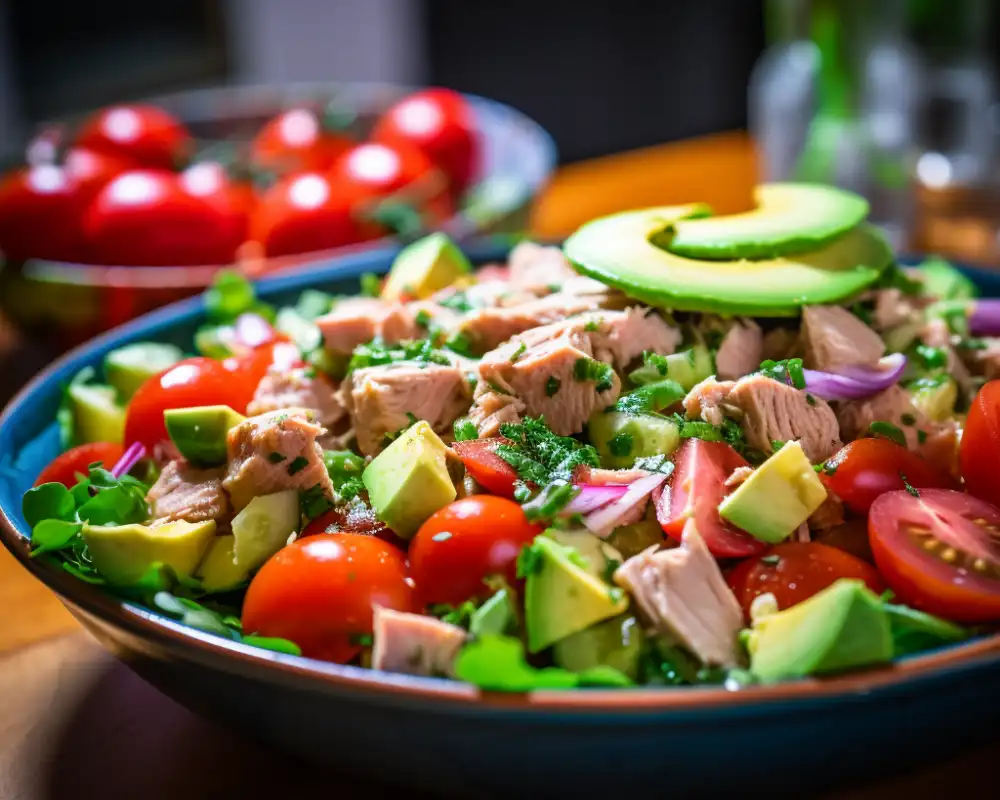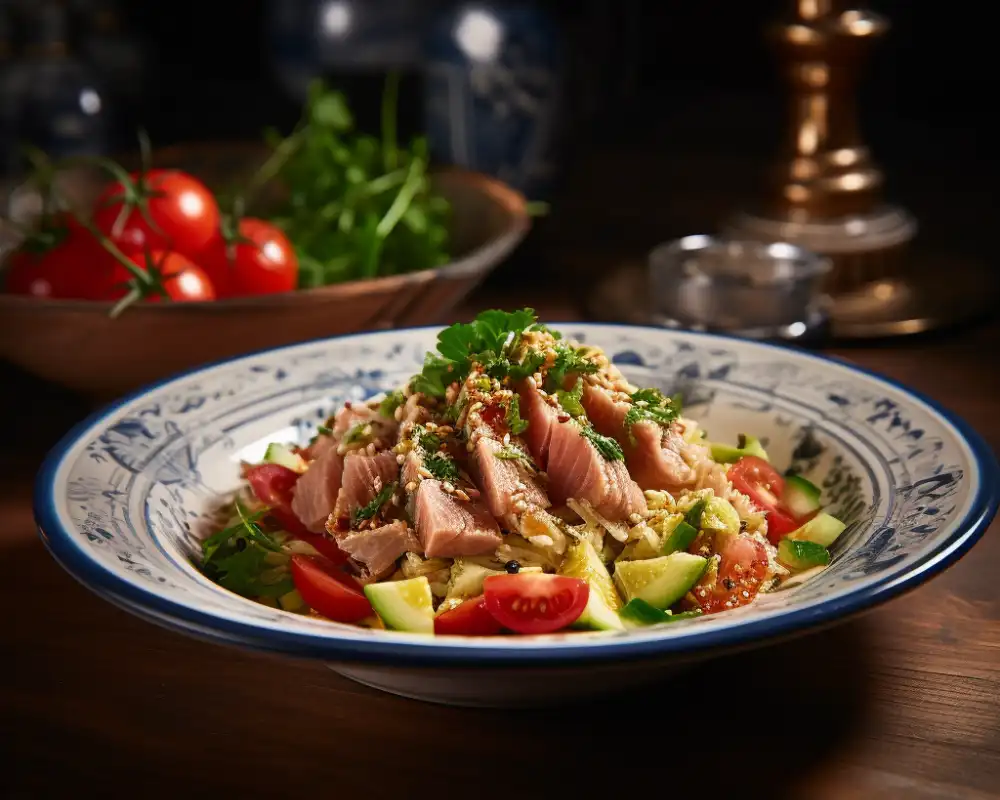Comprehending the highest possible temperature level enabled cold-holding tuna salad is crucial for ensuring certain food security. An active understanding of this temperature restriction aids in preventing the danger of foodborne ailments and makes sure that the tuna salad stays safe for consumption. Appropriate cold-holding temperatures prevent the development of harmful germs, preserving both the top quality and security of the meal. In short, knowing and sticking to these temperature level guidelines is basic for keeping food fresh and guarding consumer wellness. Tuna salad can offer a rewarding and low-carb dish choice rich in healthy protein and healthy fats if you are on the Keto diet.
What is the Highest Temperature Allowed for Cold-holding Tuna Salad?
The FDA suggests that tuna salad be maintained at an optimum temperature of 41 degrees Fahrenheit to prevent bacterial growth and preserve its cooled state.
To store cold tuna salad properly, you should place it in a closed container with a cover and maintain it in the refrigerator. It is necessary to eat the tuna salad within two to 5 days of keeping it. Leaving the tuna salad out for more than two hours can cause the mayonnaise and various other active ingredients to ruin, making it unsafe to eat. Here are some suggestions to maintain the quality and flavour of your chilly tuna salad:
- Use fresh active ingredients.
- Store the tuna salad in a superficial container to permit also cooling down.
- Maintain the tuna salad away from other foods in the fridge to stop cross-contamination.
- Do not freeze the tuna salad as it can trigger the mayo to divide and the appearance to become watery.
Why Cold-Holding for Tuna Salad Issues?
Cold-protecting is a meals conservation method that entails preserving perishable foods at low-temperature ranges, usually round forty one ° F (5 ° C) or beneath. This technique is applied to gradual down the development of harmful micro organism that could cause foodborne ailments. Cold conserving is normally made use of for meals together with tuna salad, which includes mayo and various different lively substances that can smash right away if not saved appropriately.
Preserving correct temperature stages is important for preventing microbial improvement and making sure of the freshness of tuna salad. The Food and Drug Administration (FDA) suggests that cold-preserving temperatures ought to be at or below 41 ° F (five ° C). This temperature makes certain that the meals remains cooled and protects against microorganisms from increasing on it. It may be very vital to store cold tuna salad in an airtight field with a lid and eat it within 2 to five days of storing it. Leaving the tuna salad out for extra than 2 hours can trigger the mayonnaise and other ingredients to smash, making it dangerous to consume.
Avoiding Foodborne Health Problems:
It is necessary to guarantee that cool foods are kept at the right temperature levels to prevent foodborne conditions. Inadequate temperature law can result in the spreading of unsafe germs like Salmonella, Listeria, and E. coli. These harmful bacteria can trigger numerous signs, ranging from minor stomach pain to serious sickness and possible fatality.
In 2018, a foodborne health problem breaks out associated with pre-packaged tuna salad was reported in the USA, especially mapped to a convenience store chain. Thirteen cases of salmonella infection were documented across three states, with the contamination likely coming from poor temperature monitoring throughout the storage and transport of the tuna salad.
In 2011, a Listeria breakout in the United States was linked to polluted melons, leading to 147 reported illnesses throughout 28 states and 33 deaths. The fruit was discovered to be polluted with Listeria, a bacterium that can flourish in cold settings. Mapped back to a Colorado farm, the breakout was attributed to insufficient cleanliness and temperature level control practices.

Best Practices for Cold-Holding Tuna Salad:
- On occasions, make use of chafing meals or ice trays to keep the salad cold, and keep an eye on the temperature consistently, restoring ice as required.
- Limit the moment the salad invests at room temperature level, disposing of any type of leftovers that have been unrefrigerated for more than two hours.
- Educate team on appropriate handling and storage space procedures and carry out normal evaluations of refrigeration tools, repairing or replacing defective tools promptly.
- Have a strategy in place for power blackouts or equipment failures, using backup refrigeration or transferring perishables if necessary.
- Lastly, get educated regarding the correct home storage space after purchase, giving standards for maintaining quality.
Educational Campaigns on Cold-holding Practices:
Educational projects play a critical role in elevating understanding about cold-holding practices and advertising food safety and security. These projects are created to inform food handlers and consumers about the importance of appropriate temperature level control and risk-free food dealing techniques.
It is the duty of food facilities, catering services, and customers to proactively encourage the relevance of food safety. To accomplish this responsibility, food establishments and food caterers must guarantee that their staff members obtain training in ideal food-taking care techniques and follow developed procedures for preserving cold-holding temperature levels. Additionally, they must frequently check and maintain their tools to guarantee that food is saved at the proper temperature level.
People can contribute to guaranteeing food security by adopting appropriate food management methods in their homes. This encompasses storing perishable items, such as tuna salad, at a temperature level of 41 ° F (5 ° C) or lower and eating them within 2 to 5 days of storage space. Furthermore, people should ensure their fridges are readied to the proper temperature, and routinely tidy and preserve them.
There are numerous methods by which academic campaigns can be performed, such as through using posters, brochures, and online materials. A circumstance of an educational campaign that highlights secure food managing methods for both consumers and food trainers is the Globe Health and Wellness Organization’s 5 Keys to Safer Food program. In addition, the Collaboration for Food Safety and Security Education and Learning is an organization that creates academic projects targeting customers and merchants to raise recognition about food safety and prevent circumstances of foodborne disease.
Collaboration between food companies, event caterers, and customers is vital in keeping high requirements of food security. By merging our initiatives, we can properly minimize the threat of foodborne diseases and delight in a much healthier and safer culinary experience.
Frequently Asked Questions
What is the maximum temperature level permitted for keeping a cooled tuna salad?
The temperature level threshold for storing tuna in a cool atmosphere is 41 levels Fahrenheit or lower. This limit helps to keep the food’s cooled state and hinders the expansion of germs on its surface area.
At what temperature should chilly tuna salad be stored for sandwiches?
Cold tuna salad needs to be maintained at a temperature of 41 levels Fahrenheit or listed below when making sandwiches.
What is the recommended holding temperature level for cold tuna salad?
The suggested holding temperature level for cold tuna salad is additionally 41 levels Fahrenheit or below.
Finishing Thoughts
In recap, recognizing the highest possible temperature allowed for cold-holding tuna salad is extremely important for maintaining both high quality and safety and security. We looked into the regulative criteria, temperature level limits, and ideal methods, stressing the critical duty cold holding plays in protecting against foodborne health problems and maintaining quality. As you browse the cooking world, prioritize these insights: manage tuna salad with care, refrigerate quickly, and comply with recommended temperatures carefully. Let food security be your directing concept. By adhering to appropriate cold-holding practices, you not only secure your meals yet additionally add to a healthier and much safer eating experience. Your dedication to these standards makes certain that every bite is not simply scrumptious but likewise worry-free, boosting the joy of every cooking experience. Thanks to safe and gratifying dining!
Look into the blog “Just Prepped Foods for Your Busy Way of Living” for tips and tricks on exactly how to prepare quick and simple meals, ideal for those with stressful schedules.
